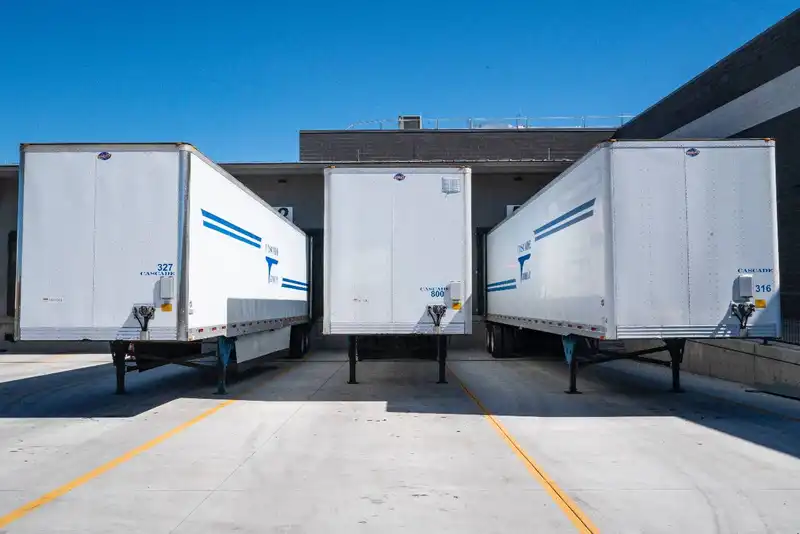The Pros and Cons of Dropshipping Explained
More and more online businesses have implemented dropshipping into their models, as it relieves them of the entire order fulfillment process. This means that retailers do not need the space, resources, and labor required to manage inventory, pick products, and deliver shipments.
Therefore, companies looking to minimize their operational costs should consider how dropshipping can improve their internal processes.
What is Dropshipping?

Dropshipping is an order fulfillment method where a business purchases and stores its inventory through a third-party. In other words, the retailer that the customer interacts with doesn't actually keep their products on-hand. Instead, once the shopper makes a purchase, the company purchases the item from the external party and requests that it's shipped directly to the customer.
Many customers either do not know or recognize dropshipping, even though approximately 33% of online retailers use it. However, the final order fulfillment looks the same from the consumer's perspective. The only real difference that dropshipping and traditional order fulfillment has is the direct product handling.
Businesses that use dropshipping never actually come in contact with their inventory, as it is purchased on an as-needed basis and sent directly to the buyer. This option is great for online retailers, startups, and growing businesses as it does not require the traditional brick-and-mortar store. Instead, companies can eliminate the overhead costs of owning a warehouse and purchasing inventory from a wholesaler that provides storage space.
While the back-end processes are handled externally, dropshipping still requires the retailer to attract and process sales. Essentially, this means that the store acts as the front and middleman.
The Pros of Dropshipping

Retailers considering dropshipping as their order fulfillment method should understand the various advantages it provides.
Easy to Start
Dropshipping is a relatively easy fulfillment method to implement. It usually involves three steps.
1. Find a Supplier
2. Set up a Website
3. Promote Products
This makes it relatively easy for startups and businesses that are new to e-commerce, as dropshipping doesn't require a warehouse or staff. After companies establish their website and find a vendor, they can begin fulfilling orders within a few hours.
Easy to Manage
Once the supplier is chosen, businesses have little to no hassle regarding order fulfillment, making dropshipping easy to manage. Retailers simply have to hold up the storefront and work on expansion.
Easy to Expand

With dropshipping, companies do not have to worry about outgrowing their order fulfillment center. During expansion, retailers only need to handle marketing and sales processing. While suppliers may slightly increase their fulfillment fees, dropshipping costs do not skyrocket during expansion, allowing companies to grow at any rate.
This method also has no limit if retailers want to expand their product range. If the primary supplier doesn't offer an item, businesses can employ multiple vendors to offer product variances.
Affordable
Since retailers aren't using their own resources and facilities to fulfill orders, dropshipping is very affordable compared to traditional methods. Businesses do not have to supplement
- Rent
- Utilities
- Bulk inventory purchases
- Warehouse labor
- Packing supplies
The only expense that retailers are responsible for is the app or website where customers place their orders.
Flexible
Perhaps the biggest advantage of dropshipping is the level of flexibility it provides retailers. Businesses don't need a physical office or even a traditional staff. Instead, employees can work from home on their laptops to maintain product sites while their supplier orchestrates orders.
Remote working also doesn't require set hours, so owners can work whenever available, providing enough time to work on front-end operations.
Low Risk

Companies that use dropshipping aren't exposed to traditional inventory risks, such as
- Understocking
- Overstocking
- Deadstock
- Damaged stock
The Cons of Dropshipping
As with anything, there are also cons related to dropshipping that retailers should understand before making their final decision.
Smaller Profit Margins
Depending on where the supplier is located regarding the target audience, further shipping often increases dropshipping fees and reduces profit margins. This is also the case when retailers enter an extremely competitive niche in their market.
However, businesses can expand their margins by finding a less competitive subset of their market.
Difficult Order Processing

Businesses that handle all of their orders through one vendor have a straightforward order fulfillment process. However, it can quickly become stressful when multiple suppliers enter the network, as each company may have different policies and solutions.
In this case, organizations need to ensure they have either an employee or solution that integrates all vendor data.
Lack of Control
Since customer orders are automatically reported to the suppliers, retailers don't have much control over the fulfillment and shipping processes. Instead, they simply have to trust that the vendor is on top of orders and remaining compliant with regulations.
This disconnection can also lead to miscommunication if businesses aren't careful. Therefore, owners should prioritize each other to ensure everyone is on the same page.
Liability
Unfortunately, the business's lack of control doesn't mean that suppliers are held accountable for their mistakes. Since the retailer is who the customers interact with, they are blamed for every order fulfillment mistake, late package, and backorders.
There are many factors to consider when determining whether dropshipping is the right method for a retailer. Businesses should look at their present and future goals regarding inventory range, profitability, and customer reach.





